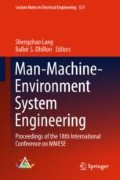Abstract
The key technologies of fire-control (FC) radar of low probability of intercept (LPI) are researched, and an analytical model is established and applied to conduct quantitative calculation and qualitative analysis of the relationship between the LPI advantage and maximal detection range in mainlobe interception mode with various time–bandwidth signals through a case study, so as to achieve the low intercept performance of fire-control radar and improve its effectiveness and survivability. It is found from analysis that the transmission energy needs real-time management based on prior information; both the peak power (PP) and pulse width (PW) of transmission signal of FC radar of LPI need to be quantitatively controlled, which is of referential significance for the design of FC radar of LPI.
Access this chapter
Tax calculation will be finalised at checkout
Purchases are for personal use only
References
Yu W (2014) Analysis of FC radar’s anti-jamming capabilities on conditions of supported jamming. Vessel Electron Eng 34(10):72–75
Wang Zh (2006) Status quo and developing trend of ADF FC radar. FC Radar Technol 35(9):43–46
Wang F (2015) Signal processing technology of airborne radar of LPI. Science Press, Beijing, pp 6–9
Huan J (2004) Research on LPI radar. Master’s thesis of Nanjing University of Science and Technology, 8–19
Gagarin Air Force Academy (Russia) (2002) EW calculation method of tactics and campaign. Translated by Hu Xiaohui. Air Force Command Academy, Beijing, pp 163–167
Author information
Authors and Affiliations
Corresponding author
Editor information
Editors and Affiliations
Rights and permissions
Copyright information
© 2019 Springer Nature Singapore Pte Ltd.
About this paper
Cite this paper
Zhu, Y., Yu, W., Sun, H., Li, K., Luo, J. (2019). Analysis of Key Technologies and Performances of Fire-Control Radar of Low Probability of Intercept. In: Long, S., Dhillon, B. (eds) Man-Machine-Environment System Engineering . MMESE 2018. Lecture Notes in Electrical Engineering, vol 527. Springer, Singapore. https://doi.org/10.1007/978-981-13-2481-9_24
Download citation
DOI: https://doi.org/10.1007/978-981-13-2481-9_24
Published:
Publisher Name: Springer, Singapore
Print ISBN: 978-981-13-2480-2
Online ISBN: 978-981-13-2481-9
eBook Packages: Intelligent Technologies and RoboticsIntelligent Technologies and Robotics (R0)

